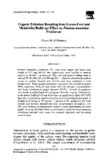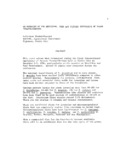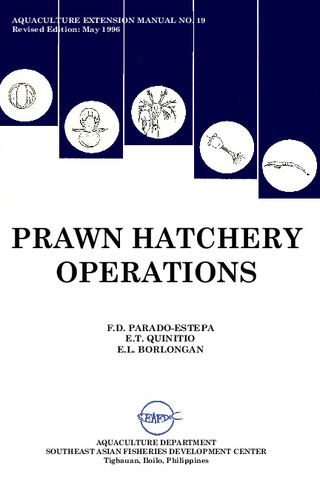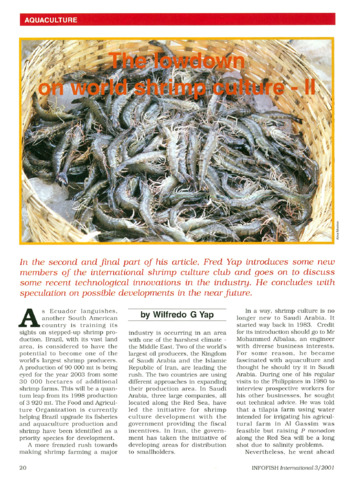Organic pollution resulting from excess feed and metabolite build-up: Effect on Penaeus monodon postlarvae

រកមើល / បើក
Request this document
កាលបរិច្ឆេទ
1990អ្នកនិពន្ធ
Page views
257ទិន្នន័យមេតា
មើលកំណត់ត្រាលម្អិតនៃធាតុCited times in Scopus
Share
អរូបី
Penaeus monodon postlarvae, PL, with mean weight and mean total length of 0.57 mg and 6.5 mm respectively, were stocked in aerated aquaria at 20 litre−1 of seawater. They were fed minced shrimp meat at rates of 10, 50, 100, 250, and 500 mg litre−1. Aquaria with diatoms as feed served as control. Growth and survival rates were examined at each feeding level. Water quality parameters measured were dissolved oxygen (DO), ammonia (NH4-N) and nitrite (NO2-N) nitrogen concentrations and 5-day biochemical oxygen demand (BOD5). Growth of postlarvae was similar at all feeding levels and greater than the controls. Survival rate at the lowest feeding level was better but not significantly higher (P > 0.05) feeding level of up to 50 mg litre−1 proved to be satisfactory for both growth and survival. Beyond this level, accumulation of organics, low DO, and build-up of metabolites caused a rapid deterioration in water quality. Even at sub-lethal levels a combination of adverse environmental conditions imposed stress upon the cultured organisms and decreased survival rates.
Suggested Citation
Millamena, O. M. (1990). Organic pollution resulting from excess feed and metabolite build-up: Effect on Penaeus monodon postlarvae. Aquacultural Engineering , 9(3), 143-150. https://doi.org/10.1016/0144-8609(90)90001-G
ប្រធានបទ
Taxonomic term
បណ្តុំបណ្តុំ
- AQD Journal Articles [1242]
Related items
Showing items related by title, author, creator and subject.
-
An overview of the nutrition, feed and feeding techniques of prawn penaeid/shrimps
Piedad-Pascual, Felicitas (Philippine Council for Aquatic and Marine Research and Development, 1989)This paper echoes what transpired during the first International Conference of Penaeid Prawns/Shrimps held in Iloilo City in December 4-7, 1984, particularly on the Nutrition nd Feed Development. Around 25 papers were ... -
Prawn hatchery operations
Parado-Estepa, Fe D.; Quinitio, Emilia T.; Borlongan, Emeterio L. (Aquaculture Department, Southeast Asian Fisheries Development Center, 1996-05)The manual, an updated version of the 1984 SEAFDEC/AQD manual, presents the underlying principles and step-by-step instructions of prawn larval and post-larval rearing. The techniques described are not only applicable to ... -
The lowdown on world shrimp culture - II
Yap, Wilfredo G. (INFOFISH, 2001)This paper introduces some new members of the international shrimp culture club and goes on to discuss some recent technological innovations in the industry, particularly the polyculture of tilapia (mainly Oreochromis ...





